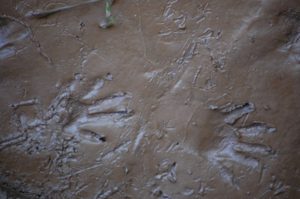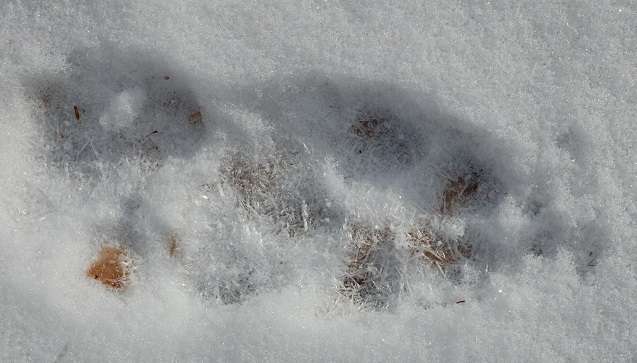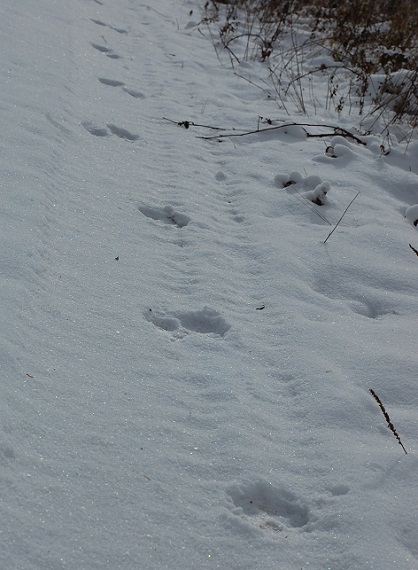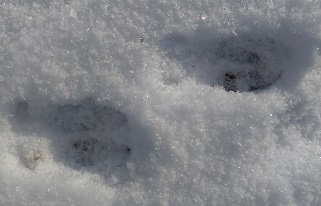It’s a lovely day for a hike. But the woods and fields are silent, not an animal to be found. Perhaps you slept in and didn’t make it out for that early morning as planned. Looking for animal tracks is another way to enjoy the wildlife out there.


These clear tracks were easy to identify by their unique outlines and location in a muddy marsh habitat.
For others, you need to consider size of the prints, subtle toe arrangements, and length of stride. I initially thought this was a red fox track, but when I checked my books I realized it was much too large and the stride too long.

This year I’m lucky enough to live where it snows regularly in the winter, making a great medium for recording the activities of animals. The coyote is still patrolling the same stretch of road as before.



Tracks are often more (or less) than footprints. Look for grasses bent over, dew missing or smeared on foliage. Or in this case:




I taught myself to track through many years of observation, but also sought guidance from books. I recommend a good animal field guide, e.g. Peterson Field Guide to Mammals in North America, as well as a tracking-specific reference like Tom Brown’s Field Guide to Nature Observation and Tracking. The author of the latter may be a real kook with his dubious “Indian mentor” backstory, but has some really good points to improve your tracking skills.
What will you find next time you are out in nature?